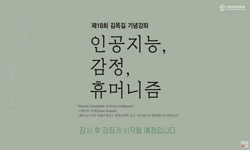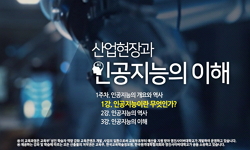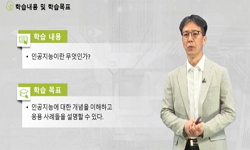Purpose: Functional characteristics and durability of the artificial urinary sphincter (AUS) among patients who develop bladder cancer has been poorly characterized. We sought to evaluate AUS outcomes among patients subsequently diagnosed with bladder...
http://chineseinput.net/에서 pinyin(병음)방식으로 중국어를 변환할 수 있습니다.
변환된 중국어를 복사하여 사용하시면 됩니다.
- 中文 을 입력하시려면 zhongwen을 입력하시고 space를누르시면됩니다.
- 北京 을 입력하시려면 beijing을 입력하시고 space를 누르시면 됩니다.



What is the fate of artificial urinary sphincters among men undergoing repetitive bladder cancer treatment?
한글로보기https://www.riss.kr/link?id=A104840507
-
저자
S. Mitchell Heiner (Mayo Clinic School of Medicine) ; Boyd R. Viers (Mayo Clinic) ; Marcelino E. Rivera (Mayo Clinic) ; Brian J. Linder (Mayo Clinic) ; Daniel S. Elliott (Mayo Clinic)

- 발행기관
- 학술지명
- 권호사항
-
발행연도
2018
-
작성언어
English
- 주제어
-
등재정보
KCI등재,SCOPUS,SCIE
-
자료형태
학술저널
-
수록면
44-48(5쪽)
-
KCI 피인용횟수
1
- DOI식별코드
- 제공처
-
0
상세조회 -
0
다운로드
부가정보
다국어 초록 (Multilingual Abstract)
Purpose: Functional characteristics and durability of the artificial urinary sphincter (AUS) among patients who develop bladder cancer has been poorly characterized. We sought to evaluate AUS outcomes among patients subsequently diagnosed with bladder cancer, in order to describe device survivability when subject to diagnostic and therapeutic procedures such as cystoscopy, transurethral resection, and cystectomy.
Materials and Methods: We retrospectively reviewed 1,803 male patients treated with AUS surgery at a single institution between 1983–2014. We describe AUS device outcomes among patients undergoing surveillance and treatment for bladder cancer.
Results: Following AUS placement, 14 (0.8%) patients were subsequently diagnosed with and treated for bladder cancer and 4 patients with bladder cancer undergoing treatment and screening, subsequently received AUS placement. The median follow-up from device placement was 7.2 years (interquartile range [IQR], 2.8–11.5), and the median time from AUS placement to bladder cancer diagnosis was 6 (IQR, 0–9). There were a total of 8 primary and 1 secondary devices failures. Despite a median of 2 diagnostic cystoscopies (IQR, 1–6) and 0 bladder tumor resections (IQR, 0–0) per patient following device implantation, only 1 (5.6%) patient experienced an iatrogenic erosion related to urethral manipulation. Among those undergoing cystectomy (n=4), 1 device was left in situ without complication.
Conclusions: Bladder cancer surveillance and treatment with an AUS device in place appears to confer minimal additional risk to AUS survival. Careful attention should be given to device deactivation and use of the smallest caliber instruments available to minimize the risk of iatrogenic urethral erosion.
참고문헌 (Reference)
1 Myers JB, "Urethral strictures and artificial urinary sphincter placement" 44 : 93-103, 2017
2 Gousse AE, "Two-stage management of severe postprostatectomy bladder neck contracture associated with stress incontinence" 65 : 316-319, 2005
3 Scott FB, "Treatment of urinary incontinence by an implantable prosthetic urinary sphincter" 112 : 75-80, 1974
4 Rivera ME, "The impact of prior radiation therapy on artificial urinary sphincter device survival" 195 : 1033-1037, 2015
5 Van der Aa F, "The artificial urinary sphincter after a quarter of a century: a critical systematic review of its use in male non-neurogenic incontinence" 63 : 681-689, 2013
6 Cefalu CA, "Safety of the "drain and retain" option for defunctionalized urologic prosthetic balloons and reservoirs during artificial urinary sphincter and inflatable penile prosthesis revision surgery: 5-year experience" 82 : 1436-1439, 2013
7 Linder BJ, "Perioperative complications following artificial urinary sphincter placement" 194 : 716-720, 2015
8 Ziegelmann MJ, "Outcomes of artificial urinary sphincter placement in octogenarians" 23 : 419-423, 2016
9 Kim SP, "Long-term durability and functional outcomes among patients with artificial urinary sphincters: a 10-year retrospective review from the University of Michigan" 179 : 1912-1916, 2008
10 Linder BJ, "Long-term device outcomes of artificial urinary sphincter reimplantation following prior explantation for erosion or infection" 191 : 734-738, 2014
1 Myers JB, "Urethral strictures and artificial urinary sphincter placement" 44 : 93-103, 2017
2 Gousse AE, "Two-stage management of severe postprostatectomy bladder neck contracture associated with stress incontinence" 65 : 316-319, 2005
3 Scott FB, "Treatment of urinary incontinence by an implantable prosthetic urinary sphincter" 112 : 75-80, 1974
4 Rivera ME, "The impact of prior radiation therapy on artificial urinary sphincter device survival" 195 : 1033-1037, 2015
5 Van der Aa F, "The artificial urinary sphincter after a quarter of a century: a critical systematic review of its use in male non-neurogenic incontinence" 63 : 681-689, 2013
6 Cefalu CA, "Safety of the "drain and retain" option for defunctionalized urologic prosthetic balloons and reservoirs during artificial urinary sphincter and inflatable penile prosthesis revision surgery: 5-year experience" 82 : 1436-1439, 2013
7 Linder BJ, "Perioperative complications following artificial urinary sphincter placement" 194 : 716-720, 2015
8 Ziegelmann MJ, "Outcomes of artificial urinary sphincter placement in octogenarians" 23 : 419-423, 2016
9 Kim SP, "Long-term durability and functional outcomes among patients with artificial urinary sphincters: a 10-year retrospective review from the University of Michigan" 179 : 1912-1916, 2008
10 Linder BJ, "Long-term device outcomes of artificial urinary sphincter reimplantation following prior explantation for erosion or infection" 191 : 734-738, 2014
11 Seideman CA, "Is prolonged catheterization a risk factor for artificial urinary sphincter cuff erosion?" 82 : 943-946, 2013
12 Freedman ND, "Association between smoking and risk of bladder cancer among men and women" 306 : 737-745, 2011
13 Agarwal DK, "Artificial urinary sphincter urethral erosions: temporal patterns, management, and incidence of preventable erosions" 33 : 26-29, 2017
14 Lai HH, "13 years of experience with artificial urinary sphincter implantation at Baylor College of Medicine" 177 : 1021-1025, 2007
동일학술지(권/호) 다른 논문
-
- 대한비뇨의학회
- Ethan L Matz
- 2018
- KCI등재,SCOPUS,SCIE
-
- 대한비뇨의학회
- Guan Hee Tan
- 2018
- KCI등재,SCOPUS,SCIE
-
Role of cytoreductive nephrectomy in the targeted therapy era: A systematic review and meta-analysis
- 대한비뇨의학회
- Herney A. García-Perdomo
- 2018
- KCI등재,SCOPUS,SCIE
-
- 대한비뇨의학회
- 김병수
- 2018
- KCI등재,SCOPUS,SCIE
분석정보
인용정보 인용지수 설명보기
학술지 이력
| 연월일 | 이력구분 | 이력상세 | 등재구분 |
|---|---|---|---|
| 2023 | 평가예정 | 해외DB학술지평가 신청대상 (해외등재 학술지 평가) | |
| 2020-01-01 | 평가 | 등재학술지 유지 (해외등재 학술지 평가) |  |
| 2019-03-12 | 학회명변경 | 한글명 : 대한비뇨기과학회 -> 대한비뇨의학회 |  |
| 2016-03-04 | 학술지명변경 | 외국어명 : 미등록 -> Investigative and Clinical Urology |  |
| 2016-01-15 | 학술지명변경 | 한글명 : Korean Journal of Urology -> Investigative and Clinical Urology |  |
| 2011-01-01 | 평가 | 등재학술지 유지 (등재유지) |  |
| 2009-02-21 | 학술지명변경 | 한글명 : 대한비뇨기과학회지 -> Korean Journal of Urology외국어명 : The Korean Journal of Urology -> 미등록 |  |
| 2009-01-01 | 평가 | 등재학술지 유지 (등재유지) |  |
| 2007-01-01 | 평가 | 등재학술지 유지 (등재유지) |  |
| 2005-01-01 | 평가 | 등재학술지 유지 (등재유지) |  |
| 2002-01-01 | 평가 | 등재학술지 선정 (등재후보2차) |  |
| 1999-07-01 | 평가 | 등재후보학술지 선정 (신규평가) |  |
학술지 인용정보
| 기준연도 | WOS-KCI 통합IF(2년) | KCIF(2년) | KCIF(3년) |
|---|---|---|---|
| 2016 | 0.14 | 0.14 | 0.13 |
| KCIF(4년) | KCIF(5년) | 중심성지수(3년) | 즉시성지수 |
| 0.13 | 0.12 | 0.314 | 0.23 |




 KCI
KCI






